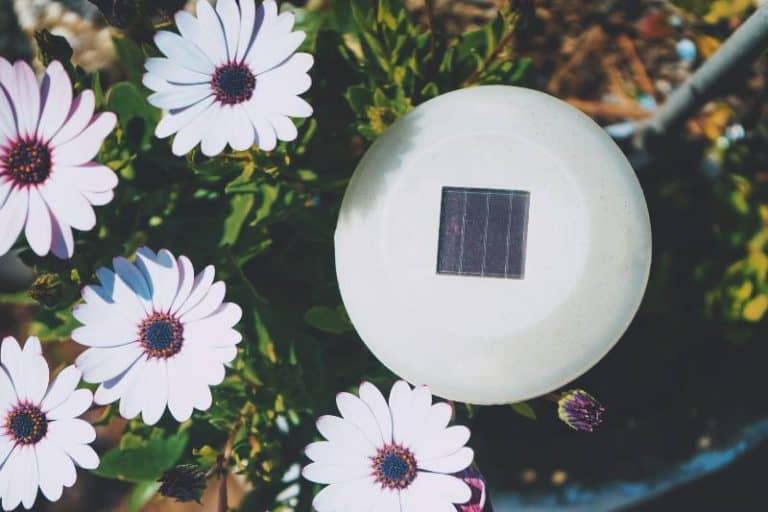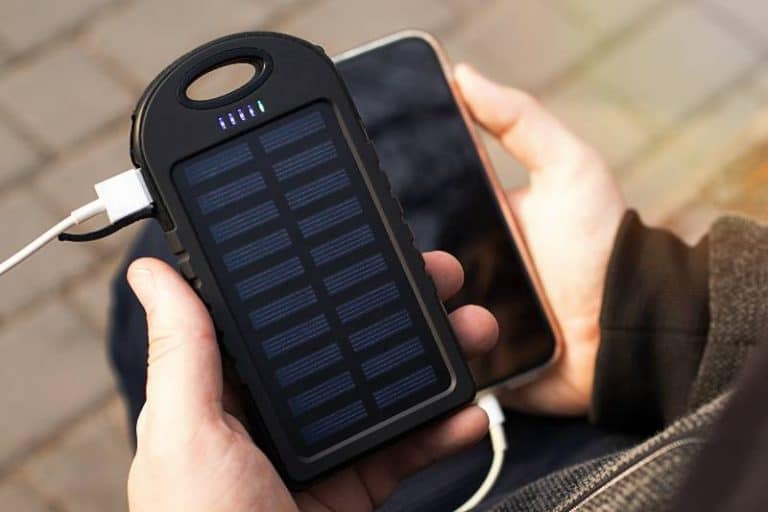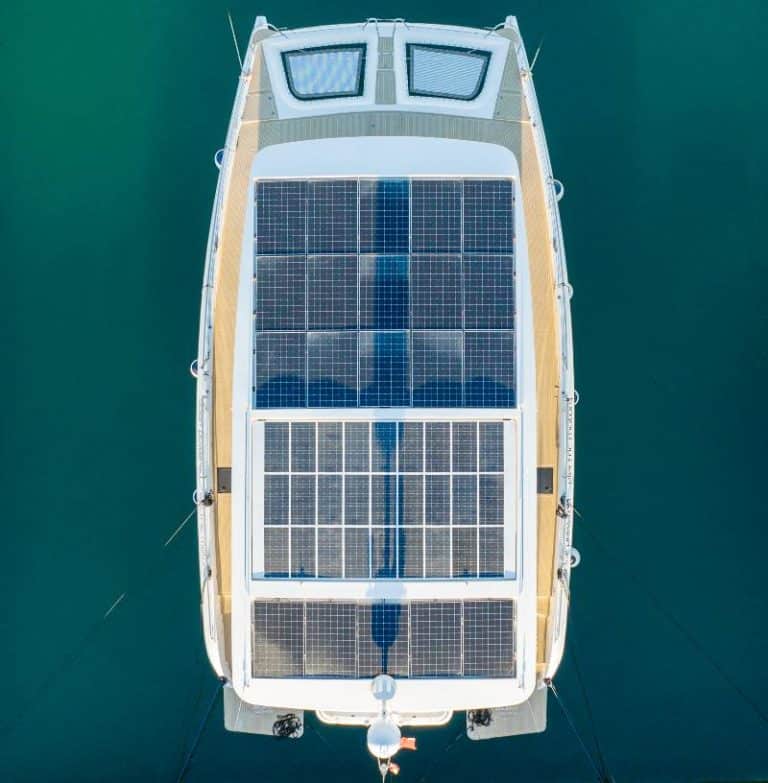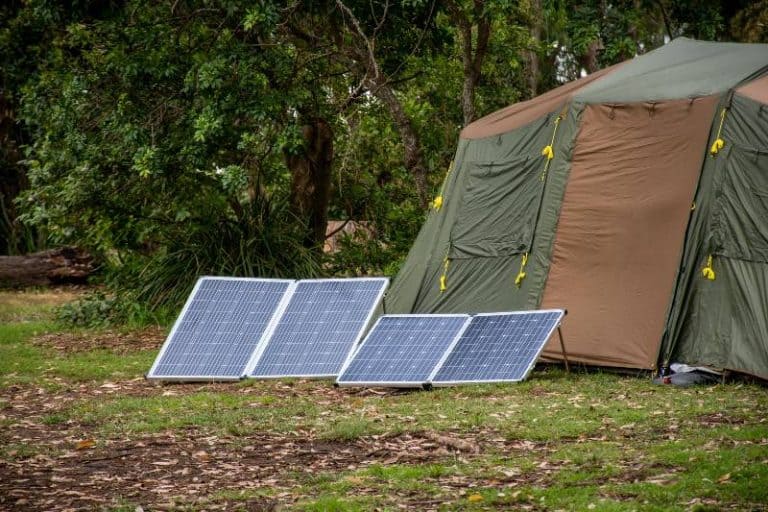Solar Energy for Apartments – The Game Changer
Are you looking for ways to reduce your carbon footprint and save money on utility bills at the same time? Solar energy is a great option for apartment dwellers who want to make a positive difference in their energy consumption while reducing their costs. With several affordable government incentives, solar power is becoming more and more attractive. Here we’ll discuss some of the benefits of installing solar systems on apartment buildings, outline how they work, and explain potential savings by investing in them. Whether you’re an environmental enthusiast or just trying to cut down your monthly expenses, this blog has something for everyone!
Portable solar panels are a perfect solution for apartment dwellers. Their flexibility allows for temporary installation on a balcony or windows without requiring permission from the landlord. Plus, their portability makes it effortless to transfer them to another apartment whenever needed. Enjoy the benefits of solar power without the hassle!
Key Takeaways
- Solar energy isn’t confined to standalone houses; even apartment dwellers can harness its benefits through community solar systems or individual setups, despite challenges like limited roof space.
- Adopting solar energy in apartments can lead to significant financial savings, increase property value, and contribute to a greener, more sustainable environment.
- With advancements in technology, evolving regulations, and increasing incentives, solar energy for apartments is not just feasible but is also the way forward for sustainable urban living.

Can You Install Solar Panels in an Apartment?
1. Understand Your Living Situation
When we say “installing solar panels in an apartment,” we’re primarily looking at individuals who rent their living space or live in multi-unit buildings. Unlike a standalone home where you can directly mount solar panels on the roof, apartments pose unique challenges.
2. Check with Your Landlord or Homeowners Association (HOA)
Before diving into any project, it’s essential to communicate with your landlord or HOA. They will have rules and regulations in place about structural changes to the building. For instance, if you wanted to install a panel on a balcony or exterior wall, you’d need their permission.
3. Solar Window Films and Solar Windows
If traditional panels are a no-go, don’t fret! There are innovative solutions like solar window films and solar windows. Imagine this: every time the sun’s rays touch your window, they’re also generating electricity. These products convert sunlight into energy, although at a lower efficiency than traditional panels. It’s like having windows and a power source in one—how cool is that?
4. Portable Solar Panels
For those who have access to a balcony or an outdoor space, portable solar panels are a fantastic option. Picture this: a sunny day with your portable panel placed outside, soaking up the sun, and you, sipping your iced tea, knowing you’re harnessing clean energy. These panels can be easily set up and stored, making them perfect for apartment dwellers.
5. Community Solar Projects
If physical installations are out of the question, look into a community solar project. Here’s how it works: a large solar array is set up in a communal space (like a vacant lot), and multiple households can ‘subscribe’ to the energy it produces. It’s like a community garden but for solar energy! Your share of the electricity generated is credited to your utility bill. It’s an excellent way for solar panels for apartment residents to benefit from solar energy without any installations.
The Importance of Solar Energy for Apartments
1. Environmental Benefits
The beauty of harnessing the sun’s power lies not only in its omnipresence but also in its gift of environmental conservation. Solar energy stands as a beacon of sustainability amidst a world increasingly fraught with pollution and resource depletion. By turning rooftops of apartments into mini solar power stations, we aren’t merely generating electricity; we’re actively reducing our carbon footprint.
Imagine a city where countless apartment buildings source their energy directly from the sun, effectively cutting down greenhouse gas emissions that fossil fuels would otherwise spew into the atmosphere. Every kilowatt-hour produced by solar panels is a testament to a greener, cleaner future, ensuring our delicate ecosystems remain vibrant and less prone to the devastating impacts of climate change.
Consider a medium-sized apartment complex that switches to solar energy. Over its solar installation’s lifespan, it could prevent the emission of hundreds of tons of CO2, which is akin to planting thousands of trees or not driving millions of miles in a car.
2. Financial Savings
While the initial investment in solar installations may seem daunting, the long-term financial benefits are profound. As the adage goes, “The sun doesn’t send a monthly bill.” Once an apartment complex equips itself with solar panels, the energy it harnesses from the sun is essentially free. This means a drastic reduction in monthly electricity bills. Moreover, with the consistent rise in traditional electricity rates, the savings gap only widens over time. In essence, by embracing solar energy, apartment owners and renters are hedging against future energy price hikes.
Let’s say an apartment complex spends $2,000 monthly on electricity. After switching to solar, they might reduce this bill by 70%, resulting in a monthly savings of $1,400. Over a year, that’s a substantial $16,800 back in the bank!
3. Increasing Property Value and Appeal
The forward momentum of the green revolution means that sustainability isn’t just a buzzword; it’s a genuine, sought-after asset. Apartments boasting solar installations not only elevate their green credentials but also see a marked increase in property value.
Modern renters and buyers are becoming increasingly eco-conscious, with many prioritizing properties that echo their own sustainability values. Solar panels on an apartment complex signal foresight, responsibility, and a commitment to environmental stewardship. In a competitive property market, this green edge can make a significant difference.
Picture two similar apartments in the same neighborhood. One has a state-of-the-art solar installation, while the other sticks with traditional energy sources. The solar-equipped apartment is likely to fetch a higher rent or sale price simply because of its sustainable features and the promise of lower energy bills.
How Solar Energy Works in Apartments
Harnessing the sun’s vast energy for daily use in apartment complexes might sound like a leap into the future, but it’s a reality that many are embracing today. From the sleek solar panels that catch the sun’s rays to innovative shared systems, solar energy is revolutionizing how apartment dwellers consume power. Let’s dive in to unravel the science and systems behind this green transformation.
1. Solar Panels: Configurations and Types
Solar panels, or photovoltaic (PV) cells, are the frontline soldiers in the quest for green energy. They are designed to capture sunlight and convert it into electricity. Depending on the needs and constraints of an apartment complex, there are different configurations and types of solar panels:
- Monocrystalline Panels: Recognized by their uniform dark look and rounded edges, these panels boast high-purity silicon, making them the most efficient. They tend to be pricier but are great for apartments with limited roof space due to their high efficiency.
- Polycrystalline Panels: These have a bluish hue and are less efficient than monocrystalline panels. However, they come at a more affordable price point, making them a popular choice for larger installations.
- Thin-Film Panels: As the name suggests, these are slim and can be flexible. They’re less efficient than their crystalline counterparts but can be a good choice for buildings with specific architectural constraints.
2. Shared Solar Systems and Community Solar Gardens
Not every apartment dweller has access to a rooftop, but that doesn’t mean they can’t benefit from solar energy. Enter shared solar systems and community solar gardens.
- Shared Solar Systems: These are centralized solar installations that multiple people can tap into. Residents buy or lease a portion of the system and get credits on their electric bills based on their share of the produced energy.
- Community Solar Gardens: Quite similar to shared solar systems, these gardens are community-led solar projects where members can purchase a stake or subscription. They’re especially beneficial for those who live in shaded areas or have roofs that can’t support solar panels.
3. Inverter Systems and Energy Storage
After sunlight is captured and converted by solar panels, it’s in the form of direct current (DC). However, our apartments run on alternating current (AC). This is where inverters come in:
- Inverters: They transform the DC produced by solar panels into usable AC. In apartment complexes, you might find central inverters that handle the conversion for the entire building or micro-inverters attached to individual panels.
- Energy Storage: This is often the unsung hero of a robust solar system. Since the sun doesn’t shine 24/7, storing its energy for later use is vital. Advanced battery systems, like lithium-ion packs, can store excess solar energy during the day to be used during nighttime or cloudy days. For apartments, this ensures a consistent power supply and greater independence from the grid.
Challenges and Solutions
Adopting solar energy in an apartment setting isn’t without its hurdles. From architectural constraints to legal tangles, there’s a host of challenges that can pop up. However, with the swift advancements in technology and a push for sustainable practices, many of these challenges have innovative solutions. Let’s delve into some of the most common issues faced and how they can be addressed.
1. Challenge: Limited Roof Space
Apartments, especially in densely populated urban areas, often struggle with limited available roof space. This poses a problem for solar installations, as fewer panels can be installed, which might not meet the energy demands of the entire building.
- Solution:
- High-Efficiency Panels: Using high-efficiency solar panels, like monocrystalline panels, can help maximize the energy yield from the available space.
- Shared Solar Systems: If individual apartment solar installations aren’t feasible due to space constraints, residents can invest in or subscribe to shared solar systems or community solar gardens.
2. Challenge: Renting vs. Owning
A significant number of apartment dwellers are renters, not owners. This can lead to hesitancy in investing in solar installations, given that renters might not stay long-term or might not have the authority to make such decisions.
- Solution:
- Solar Leasing or Power Purchase Agreements (PPAs): These financial models allow renters to benefit from solar energy without purchasing the system outright. They can either lease the system or pay for the solar power it produces at a fixed rate, usually lower than conventional electricity rates.
- Collaboration with Property Owners: Renters can propose the idea of solar installations to their landlords, showcasing the long-term financial benefits and increased property value it brings.
3. Challenge: Installation Permissions and Regulations
Installing solar panels in an apartment complex isn’t just about placing panels on the roof. There are permissions to secure, building codes to adhere to, and sometimes complex regulations to navigate.
- Solution:
- Hire Experienced Installers: Professional solar installers are familiar with the local regulations, building codes, and necessary permissions. They can guide apartment owners or management through the process seamlessly.
- Engage in Dialogue with Authorities: Establishing a dialogue with local authorities can help in understanding the requirements and possibly speeding up the approval process. This can be particularly effective if presented as a community or building-wide initiative.
- Stay Updated on Policies: Many regions are increasingly supporting renewable energy initiatives. By staying informed about local policies, grants, and incentives, apartment complexes can benefit from financial support or easier regulatory pathways for solar installations.
Steps to Implement Solar Energy in Apartments
Transitioning an apartment building to run on solar energy might seem daunting initially, but when broken down step-by-step, the path becomes much clearer. Here’s a roadmap to guide apartment owners and managers through the process:
1. Assessing Your Energy Needs
- Audit Current Energy Consumption: Begin with understanding the building’s current energy usage. You can do this by examining utility bills over the past year, which will give you a monthly and annual consumption pattern.
- Estimate Future Energy Needs: Consider any planned expansions, renovations, or changes that might affect the building’s future energy consumption. Also, think about how much of your current energy consumption you’d like to offset with solar. Some aim for 100%, while others start with a smaller percentage.
- Survey the Space: Examine the available roof space, its orientation (south-facing is typically ideal in the Northern Hemisphere), and potential shading. This will give you an idea of how many panels can be installed and how much energy they might produce.
2. Working with a Solar Provider
- Research and Choose a Reputable Provider: Look for solar providers with a strong track record, good reviews, and relevant experience, especially in handling apartment buildings.
- Initial Consultation: The provider will typically offer a consultation where they assess your building, evaluate its solar potential, and discuss your energy goals. They’ll also provide a preliminary cost estimate and projected savings.
- Explore Financing Options: Discuss with the provider about different financing avenues. This could be direct purchase, solar leasing, Power Purchase Agreements (PPAs), or community solar subscriptions. There might also be local or federal incentives, grants, or tax credits available.
- Secure Permissions: A reputable solar provider will often handle necessary permissions, be it from local authorities, utility companies, or from within the apartment community.
3. Installation and Maintenance
- Installation: Once permissions are secured and finances are in order, the installation process begins. It might involve:
- Setting up the solar panels on the roof or designated space.
- Installing inverters to convert the direct current (DC) from the panels to usable alternating current (AC).
- Integrating the system with the building’s existing electrical setup.
- Setting up metering, especially if you’re feeding excess power back into the grid.
- Inspection and Commissioning: After installation, the system will need to be inspected, usually by local authorities, to ensure it’s up to code. Once approved, the system can be officially commissioned and start generating power for the building.
- Maintenance: Solar systems have the advantage of being low maintenance. However, regular check-ups, preferably once a year, can ensure they’re working optimally. Tasks might include cleaning the panels, checking inverters, and ensuring all connections are secure.
- Monitoring: Many solar setups come with monitoring systems that allow you to track energy production in real time. This can be a valuable tool to ensure the system is working as expected and to observe the energy savings.
Incentives and Financing
Solar energy, beyond its environmental allure, often comes with a suite of financial incentives designed to make the transition more attractive and feasible. These incentives vary by region, but when combined, they can substantially offset the initial costs. Let’s delve into some of the most common avenues to reduce the financial burden of going solar in apartment settings.
1. Tax Credits and Rebates:
- Federal Solar Investment Tax Credit (ITC): The U.S. federal government offers the Solar Investment Tax Credit (ITC) to homeowners and businesses. This allows taxpayers to deduct a portion of the cost of installing a solar energy system from their federal taxes. The percentage of the credit has been designed to decrease over time, so it’s crucial to check the current rate.
- Solar Rebates: Some utility companies or state agencies provide rebates for solar panel installation. Essentially, after installing your solar system, you can receive a rebate, or direct reduction, of a portion of the cost.
2. Leasing vs. Purchasing:
- Purchasing: Buying your solar system outright provides the most significant long-term savings. While the initial cost can be steep, you benefit fully from all energy savings, rebates, and tax credits. It also tends to increase the property value.
- Leasing: If the upfront costs of purchasing a system seem prohibitive, leasing is an option. Here, a third-party company owns the solar system, and you essentially “rent” it by making monthly lease payments. You benefit from the energy savings, but the leasing company typically claims the tax credits and rebates. It’s a lower-cost entry into solar, but long-term benefits are lesser compared to purchasing.
- Power Purchase Agreements (PPAs): Similar to leasing, a third party installs and owns the solar system. Instead of paying lease payments, you buy the power your system generates at a predetermined rate, often lower than standard electricity rates.
3. Local and State Incentives:
- State Tax Credits: Similar to the federal ITC, many states offer their own tax credits for solar installations. The percentage or amount can vary widely, so it’s essential to check local regulations.
- Performance-Based Incentives (PBIs): Some states or utilities offer PBIs, where you get paid based on the amount of electricity your solar system produces. This can either be a flat rate or vary based on peak times.
- Solar Renewable Energy Certificates (SRECs): In some states, solar owners earn SRECs for every megawatt-hour (MWh) of solar electricity their system produces. These SRECs can then be sold on the market to utilities to help them meet renewable energy requirements, providing a revenue stream for solar owners.
- Net Metering: A policy where you’re credited for any excess electricity your solar system sends back to the grid. Essentially, when you produce more electricity than you consume, the surplus is sent to the grid, turning your meter backward and crediting your account.
- Local Grants and Rebates: Municipalities, counties, or local organizations sometimes offer grants, rebates, or other incentives for residents and businesses to adopt solar energy.
Case Studies
1. Uptown Apartments – Denver, Colorado:
Background: Located in Denver, Uptown Apartments is a multi-story building that wanted to reduce its carbon footprint and provide tenants with the benefit of renewable energy.
The Solution: The complex installed rooftop solar panels covering a significant portion of their available roof space. They partnered with a local solar provider who aided in securing tax credits and state incentives.
Outcome: Not only did Uptown Apartments see a significant reduction in their monthly utility bills, but the solar installation also became a selling point for potential renters keen on living in an eco-friendly environment. Additionally, they benefited from Colorado’s attractive renewable energy incentives.
2. The Solara Complex – Poway, California:
Background: Solara is an affordable housing apartment complex that had the foresight to integrate solar during its construction phase.
The Solution: The builders installed a mix of rooftop solar panels and solar shade structures in parking areas. This comprehensive approach maximized their solar power generation capacity.
Outcome: Solara generated enough power to offset a substantial part of its energy needs. Additionally, the solar shade structures provided the dual benefit of generating power and offering shaded parking for residents. Being in California, the complex also benefited from the state’s progressive renewable energy incentives and net metering policies.
3. Meridian Solar Condominiums – Seattle, Washington:
Background: A multi-unit condominium in Seattle, the Meridian wanted to counter the city’s cloudy reputation and showcase that solar can work even in less sunny locales.
The Solution: They installed high-efficiency solar panels designed to capture the maximum available sunlight, even during overcast days. They also integrated advanced energy storage solutions to store power for periods with little or no sun.
Outcome: Not only did the Meridian generate a surprising amount of solar energy given Seattle’s reputation, but the project also served as an inspiration for other buildings in the region. The condominium also enjoyed tax credits, rebates, and performance-based incentives offered by Washington state.
4. TropiSol Apartments – Queensland, Australia:
Background: Given Australia’s ample sunshine, TropiSol Apartments aimed to harness this abundance for their power needs.
The Solution: They installed an extensive rooftop solar system and utilized battery storage to retain excess power. Additionally, they integrated a shared solar system, allowing all residents to benefit equally from the generated power.
Outcome: TropiSol not only significantly cut down its dependence on grid electricity but also provided its residents with reduced energy bills. They also became a benchmark in Queensland for other apartment complexes considering the solar transition.
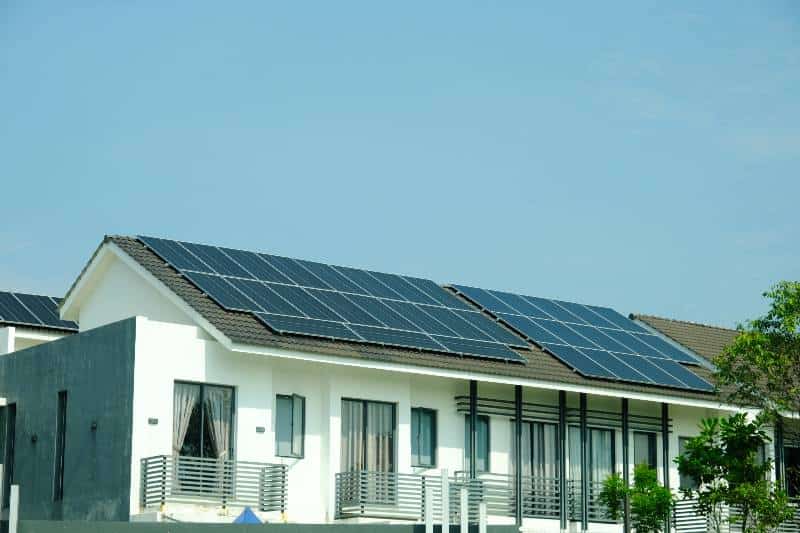
Solar Energy for Apartments FAQs
What if the apartment’s roof space is limited?
If the roof space is limited, you can still install a system to meet your energy needs. Talk to solar installers in your area to see what options they recommend for your particular building. You may also consider mounting the panels on the ground or integrating other alternative solutions like vertical arrays or carport setups.
How do renters advocate for solar installations to their landlords?
Renters should inform their landlords about the long-term financial benefits of solar installations. They can point to incentives offered by local governments and the advantages of green energy, such as increased tenant satisfaction and savings on utility bills. They may also suggest that a third-party installer or leasing option could provide an easy way for landlords to adopt solar without any upfront costs.
What incentives are available for apartment complexes to go solar?
Incentives for apartment complexes to go solar can include performance-based incentives, solar renewable energy certificates (SRECs), net metering agreements, and local grants or rebates. It’s important to research the policies in your area as they may vary significantly from state to state.
How long does a solar system last in an apartment setting?
Solar systems can last up to 25-30 years in an apartment setting, depending on the type of installation and maintenance. High-efficiency panels tend to last longer than standard ones and regular servicing and cleaning can help extend their life expectancy.
Can solar energy systems be portable for renters who move frequently?
Yes, solar energy systems can be portable for renters who move frequently. There are several modular systems available that can easily be moved from one location to another. However, it’s important to note that some of these options may not provide enough power for an entire apartment. It’s best to consult with a solar installer in your area to discuss the best option for you.
Conclusion
As solar energy offers significant financial savings and a sustainable way of life, apartment dwellers should see it as an opportunity to take control of their energy future. Not only is the adoption of solar for apartments possible, but it can also be beneficial for the greater environment. It’s time to transition towards a greener and more sustainable lifestyle, and solar energy is an essential step forward.
To incentivize people to make this shift towards renewable energy sources, there are options like community solar systems that provide the ability to access the benefits without having to sacrifice limited roof space. These advancements in technology paired with initiatives like tax incentives and improved regulations have made going solar a realistic goal for apartment dwellers.
Solar can truly be the key to unlocking efficient urban living and consistent long-term savings. We’d urge you to opt for renewable over conventional energy sources; it’s good for your wallet as much as it is for your planet! Make sure you don’t miss out on any useful information – subscribe to our newsletter, Electrik Living, where we talk about solar, saving the earth and more!


